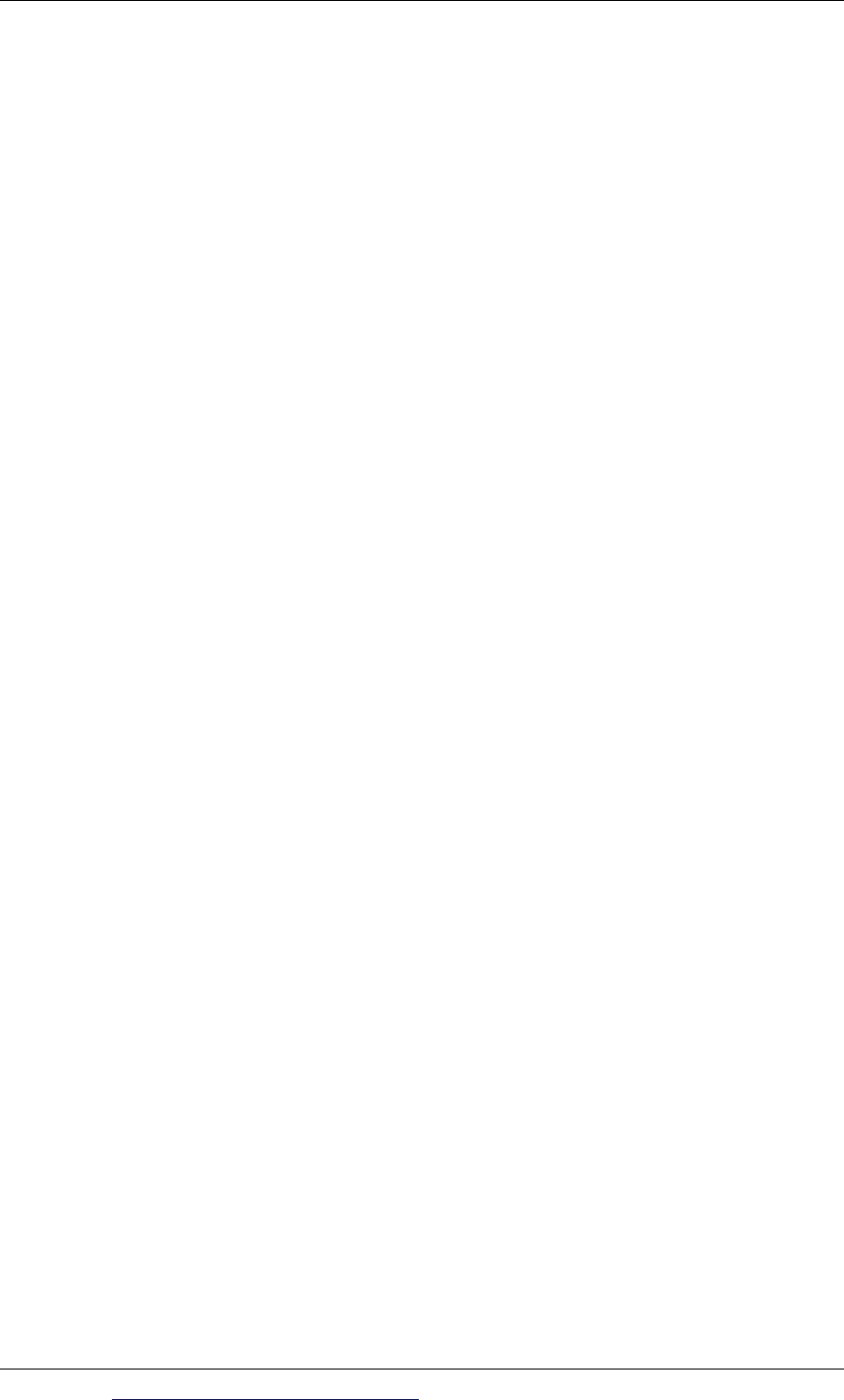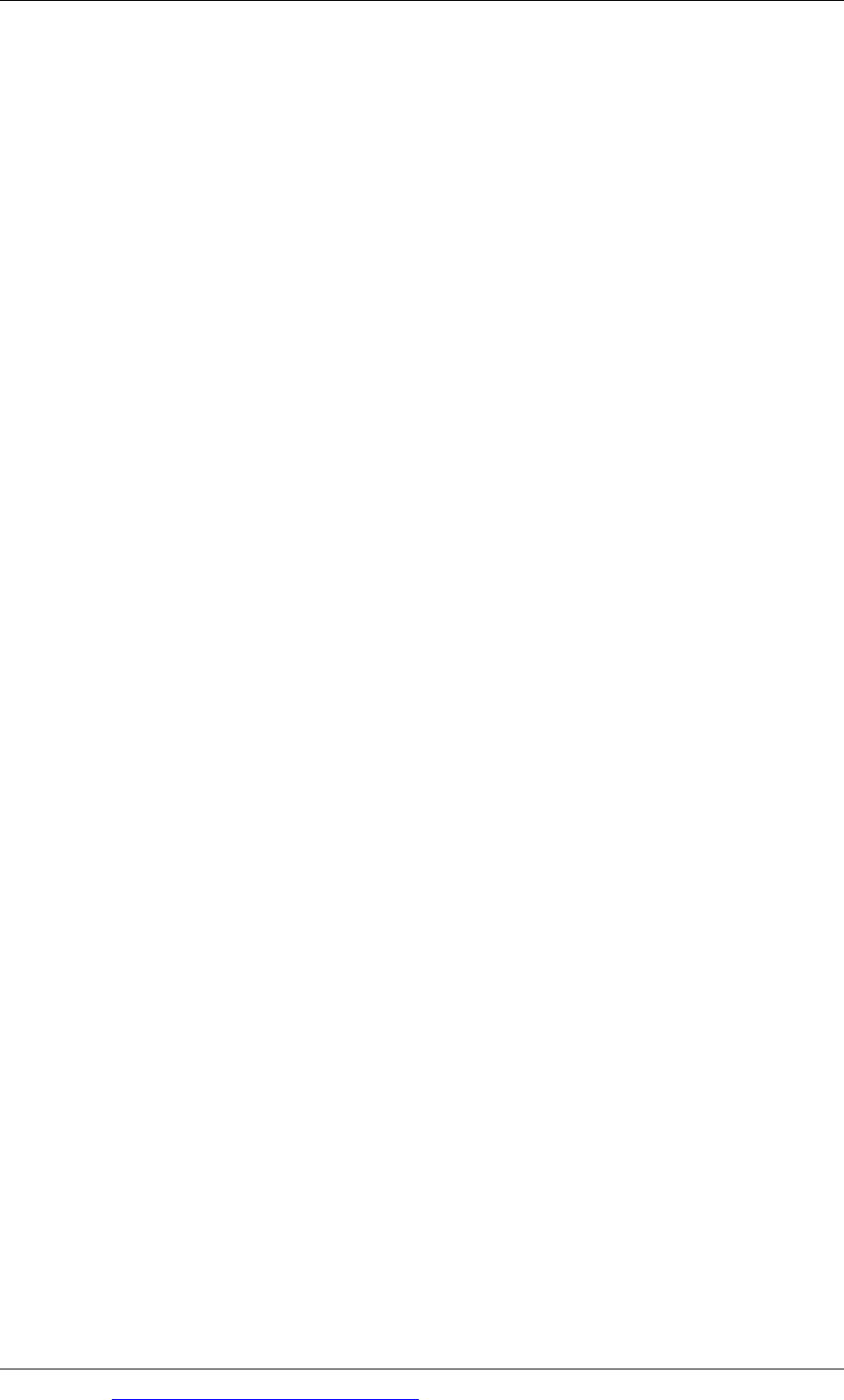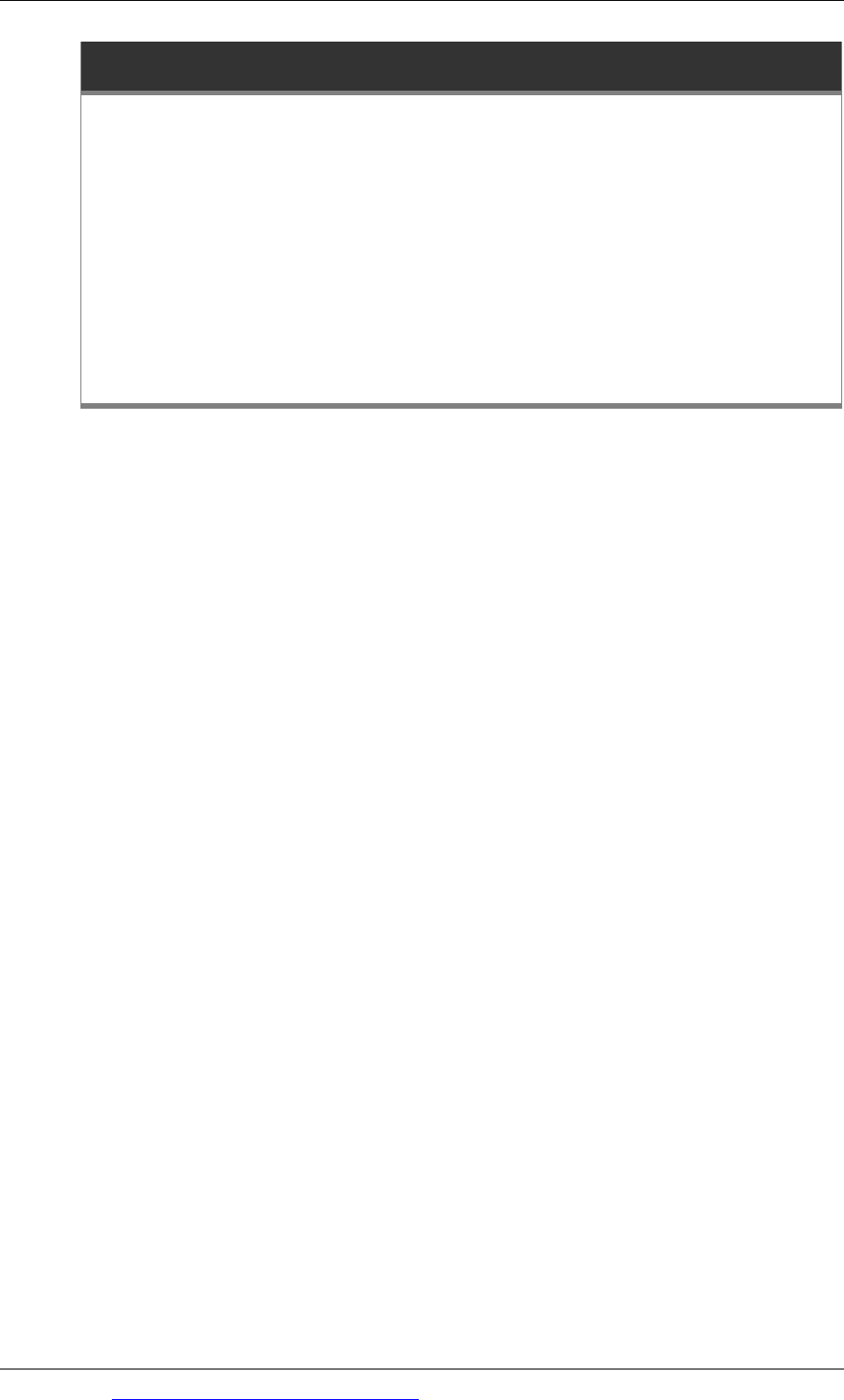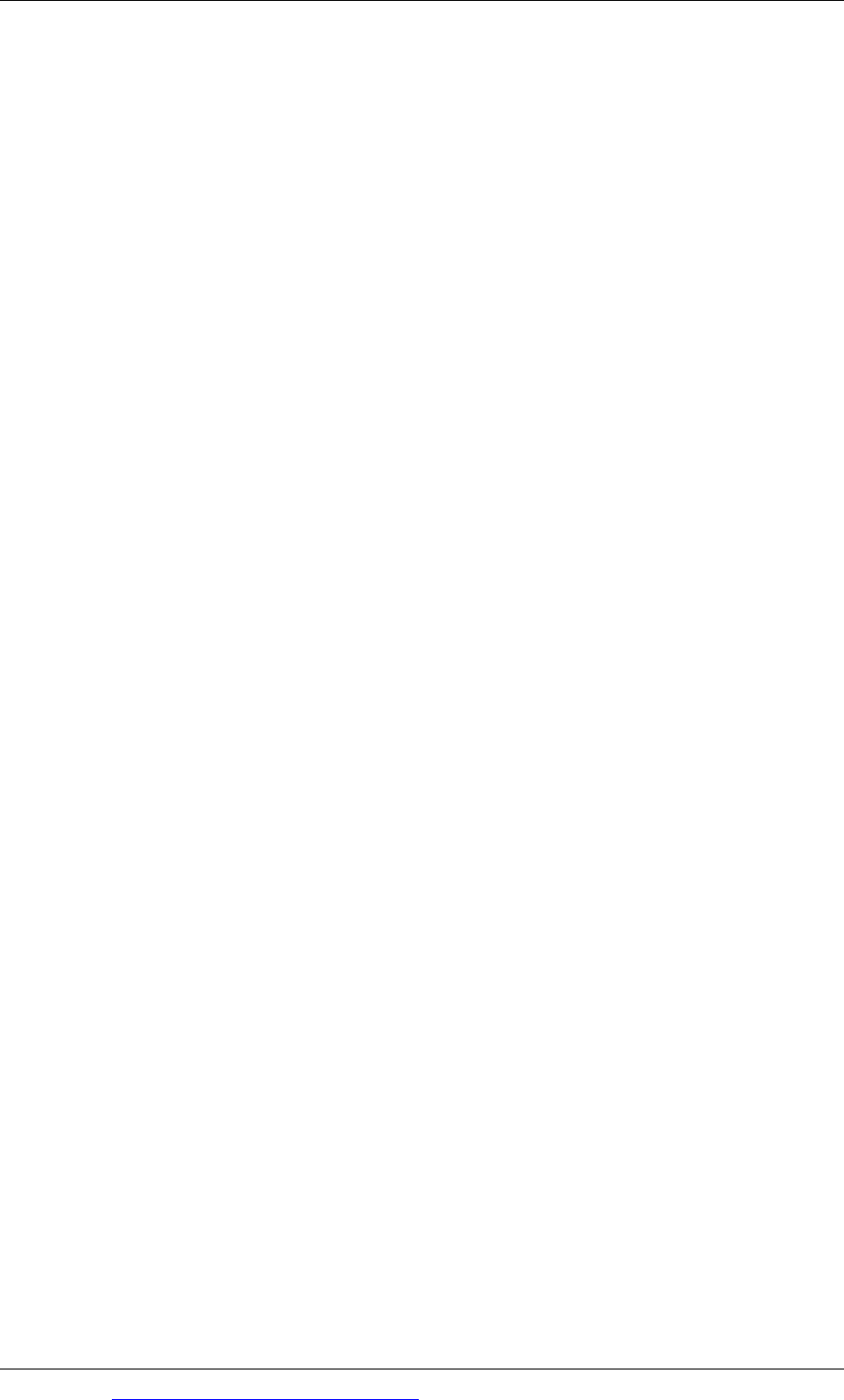ACCA F8 (INT) Audit & Assurance - 2010 - Study text - Emile Woolf Publishing
Подождите немного. Документ загружается.


Chapter 12: Substantive testing: inventory
© EWP Go to www.emilewoolfpublishing.com for Q/As, Notes & Study Guides 275
valuation, and
ownership (rights and obligations).
It is convenient to deal with the auditor’s work on the inventory count under three
headings:
before the count: planning
during the count: observing and recording
after the count: ‘follow up’.
3.6 Audit work before the count: planning
The auditor should carry out the following planning tasks before the inventory
count:
Review the audit files for previous years, to find out whether problems were
encountered with the inventory count on previous audits. If so, the auditor
should plan to make sure that similar problems do not occur again this year.
Review (for adequacy) the instructions for the count that have been prepared by
the client entity’s management: suggest appropriate changes if necessary.
Establish the date, time and location of the count.
Decide which counts at which locations will be observed by members of the
audit team.
Establish whether any inventory is held by third parties. If so, decide whether
written confirmation is needed in respect of inventory held by third parties.
Make arrangements with a local firm of auditors to attend a physical count
location if the audit firm’s own auditors are unable to do so.
Consider the possible use of the client’s internal audit department, which may
be involved in checking inventory counts.
The auditor in charge should make a requisition for the appropriate number and
grade of audit staff to observe the inventory counts.
He may also circulate these instructions to members of the audit team and invite
their comments.
The auditor in charge should also plan the audit for the inventory count.
He should become familiar with the client’s inventory. He should give particular
attention to high value or complex inventory items.
He should decide the scope of the audit testing to be performed during the
count, based on materiality and risk considerations.
He should consider whether there is a need to use an expert to assist with the
count of complex items.

Paper F8: Audit and assurance (International)
276 Go to www.emilewoolfpublishing.com for Q/As, Notes & Study Guides © EWP
3.7 Audit work during the count: observing and recording
What is the purpose of attending an inventory count?
The auditor should attend inventory counts by the client for the following reasons.
Tests of control. To ensure that the inventory count is carried out by the client
entity’s employees in accordance with their instructions. Also to look for any
control weaknesses in the inventory counting system.
Substantive tests. To ensure that there is no material misstatement at the
assertion level in the client’s financial statements. This means not just checking
that the inventory does exist, but also that the method of valuation is
appropriate. For example if some inventory appears to the auditor to be in
dilapidated condition, or if there is evidence of slow-moving items (from dates
on the inventory containers) the auditor should consider whether inventory
should be valued at net realisable value (NRV) rather than cost.
Procedures at the count
The inventory count should be a fairly straightforward procedure. The client will
appoint employees to do the count and will give instructions about how the count
should be performed. The counters are given count sheets to record the quantities
for each inventory item. These count sheets are handed out at the beginning of the
counting process (although additional sheets may be handed out later).
When inventory has been counted, it should be marked or tagged. This is to prevent
the same inventory from being counted twice. It also helps with identifying
inventory items that have not yet been counted.
On completion of the count, each count sheet should be signed by the counter
responsible for filling it in. All the sheets are handed in for recording and
summarising.
The work of the auditor during the inventory count
During the physical inventory count, the auditor should observe the count and
make his own records.
Observe
During the count, the auditor should:
Observe whether or not the count is being conducted in accordance with the
written instructions of the client’s management
Observe the condition of the inventory, in order to identify items where NRV
might be below cost (and in particular, inventory that seems to have deteriorated
in condition)

Chapter 12: Substantive testing: inventory
© EWP Go to www.emilewoolfpublishing.com for Q/As, Notes & Study Guides 277
Observe whether or not inventory not owned by the client entity is properly
identified and labelled (for example, inventory owned by customers but held on
the entity’s premises)
Observe whether or not, during the count, production of new inventory and the
movement of inventory are controlled and properly documented, in accordance
with management’s instructions for the count
At the end of the count, observe whether or not all inventory items have been
counted and tagged accordingly.
It is normal practice for the auditor to prepare an inventory count memorandum
recording his observations in the audit files. The memorandum should include a
conclusion on the effectiveness of the count procedures.
Record
The auditor should also prepare some records relating to the inventory count:
The auditor should carry out a sample of test counts. Audit staff will count
items of inventory selected for the sample and compare the quantity they have
counted with the quantity recorded by the client’s staff. This will test that
recorded inventory is complete. They should also select a sample of items from
the client’s count records and count those items themselves. This will test that
recorded inventory exists.
Any differences should be discussed with the client and resolved. The results of
the test counts should be recorded.
The auditor should make a record of the sequence numbers of the last tags and
summary sheets used during the count. This record will be used after the count
to confirm that all inventory items are included in the client’s inventory list.
The auditor should also record cut-off information. Typically he will record
details of the last few goods received notes issued before the count and the first
few goods received notes issued after the count. Similar information should be
recorded relating to despatch notes. This helps to establish the financial year in
which inventory items were physically received or physically despatched so that
the auditor can subsequently check the cut-off assertion for sales and purchases.
The auditor should record details of slow-moving or obsolete inventory, or
inventory in poor condition, observed during the count. This will provide
evidence to subsequently support the valuation assertion.
3.8 Audit work after the count: follow up
The final audit work on inventory may take place several weeks after the inventory
count itself. In the intervening period the client should have calculated a final
inventory figure for the financial statements.
One of the main objectives of the audit work on inventory quantity at this stage is to
ensure that the inventory quantities that existed at the count date are properly
reflected in the final inventory figure in the financial statements (the completeness
and presentation and disclosure assertions). (Note: At this stage, the auditor should
also carry out his checks on the valuation of inventory items, as described earlier.)

Paper F8: Audit and assurance (International)
278 Go to www.emilewoolfpublishing.com for Q/As, Notes & Study Guides © EWP
The audit work involved in verifying inventory quantities will include the
following:
Obtaining the final inventory sheets that were prepared by the client’s staff
during their inventory count.
Check the numerical sequence of the sheets and the auditor’s record of the last
sheet number, to confirm that no sheets are missing.
Check the numerical sequence of tag numbers listed on the sheets and the
auditor’s record of the final tag number, to confirm that no inventory items are
missing from the sheets.
Check the arithmetical accuracy of the calculations on the sheets.
Confirm that inventory records have been amended as appropriate. For some
inventory items, there is likely to be a difference between the physical count
numbers and the quantity of stock shown in the client’s inventory records
(where a continuous recording system is used). In these situations, the client’s
inventory records will be incorrect. The auditor should therefore check that the
inventory records were amended.
Confirm that inventory belonging to the client, but held by third parties, is
included on the inventory sheets.
Confirm that inventory belonging to third parties, but on the client’s premises at
the date of the count, is not included on the inventory sheets.
Check that cut-off is correct. This is done by reference to the cut-off information
recorded at the time of the count.
Having done all this work, the auditor should be able to reach a final conclusion on
the quantity of inventory held at the end of the reporting period.
Example
You are the senior in charge of the audit of inventory at Spares R Us. Inventory is
comprised of large quantities of spare parts for the car industry. Spares R Us
operates a perpetual inventory recording system, backed up by a rolling programme
of physical counts throughout the year. There is no year-end physical inventory
count and the amount for inventory in the year-end financial statements is based on
the computer records.
Required
Briefly summarise the audit procedures that you would undertake to obtain
evidence on the amount for inventory in the year-end financial statements.
Answer
Carry out spot checks during the year.
Conduct sample counts at the yare end, compare to perpetual records and
investigate any differences.
Review the results of the rolling counts and ensure any differences from book to
actual are investigated and adjusted for.
Check a sample of cost prices to purchase invoices.

Chapter 12: Substantive testing: inventory
© EWP Go to www.emilewoolfpublishing.com for Q/As, Notes & Study Guides 279
Assess obsolesce.
Consider the use of audit software on the year-end inventory file.
3.9 Possible control weaknesses in an inventory count
Control weaknesses in the client’s inventory counting procedures may be observed
by the auditor. These include:
Failure to pre-number the count sheets. All count sheets should be pre-
numbered, so that they can all be accounted for at the end of the count and none
are ‘lost’ (and none are counted twice).
Including on the count sheet for each inventory item the quantity of the
inventory as recorded in the entity’s inventory records. The counters should not
be told what quantity of inventory to ‘expect’ for each item, because this may
influence them to expect in advance how much inventory to ‘look for’.
Entering the quantities counted on the count sheets in pencil. Entries in pencil
can be erased and altered later, fraudulently, without leaving trace of the
alteration.
Stores staff are commonly used to do the counting. However if all the counters
are from the stores staff, there is a risk that they may collaborate to hide errors or
missing inventory. The client should therefore use some other non-stores staff to
assist in the count, such as some employees from the accounts department.
Inventory may not be marked when it is counted. This gives rise to a risk that
items of inventory will be counted twice, and possibly that some items will not
be counted at all.
Count sheets may not be signed by the individual counter who prepared them.
If there is no signature on the count sheet, it may be difficult to refer queries
back to the counter if a problem arises.
Lack of precise instructions to the counting team. The counting team must be
given precise and specific instructions about how to perform the count. If the
counting team is left to decide itself how the count should be conducted, this
will increase the risk of mistakes in counting – such as missing out some items
and double counting others.

Paper F8: Audit and assurance (International)
280 Go to www.emilewoolfpublishing.com for Q/As, Notes & Study Guides © EWP

© EWP Go to www.emilewoolfpublishing.com for Q/As, Notes & Study Guides 281
Paper F8 (INT)
Audit and assurance
CHAPTER
13
Substantive procedures:
other current assets
Contents
1 Substantive procedures: trade receivables and
prepayments
2 Substantive procedures: bank and cash balances

Paper F8: Audit and assurance (International)
282 Go to www.emilewoolfpublishing.com for Q/As, Notes & Study Guides © EWP
Substantive procedures: trade receivables and prepayments
Confirmation of receivables balances
ISA 505: External confirmations
Planning the confirmation exercise
Positive or negative confirmation?
Sample selection and performing the confirmation exercise
Audit procedures following the receipt of replies (with positive confirmation)
Preparing a summary and reaching a conclusion
Other audit procedures for receivables
The audit of prepayments
1 Substantive procedures: trade receivables and
prepayments
1.1 Confirmation of receivables balances
The balance for trade receivables is usually a material amount in a company’s
statement of financial position. A significant amount of audit work on trade
receivables is therefore likely to be needed to check the reliability of this amount.
The principal risks of misstatement of the trade receivables balance are due to:
debts being irrecoverable (the valuation assertion)
debts being contested by customers (the existence and rights and obligations
assertions)
cut-off between goods outwards and receivables recording being incorrect (the
cut-off assertion – an income statement assertion that has a knock-on effect to
the audit of trade receivables (see below)).
Because assets are typically tested for overstatement, the completeness assertion is
less relevant.
An important audit technique for trade receivables is direct confirmation of
balances with customers. This is sometimes known as ‘circularisation’.
Direct confirmation involves asking customers to provide written confirmation,
direct to the auditors, of their account balance with the client entity. Written
confirmation by customers can normally be taken as high-quality audit evidence
because it is a strong source of written, external audit evidence.
However, the reliability of this evidence depends on two factors that are not entirely
within the auditor’s control:
A large proportion of the customers who are asked to provide written
confirmation should do so. Customers are not obliged to provide confirmation,

Chapter 13: Substantive testing: other current assets
© EWP Go to www.emilewoolfpublishing.com for Q/As, Notes & Study Guides 283
and some time and effort may be required to get some customers to provide the
information required.
Some customers may provide written confirmation without properly checking
the details.
As discussed above, the auditor will be concerned to check that the balance for trade
receivables is not overstated. The confirmation process is therefore based on the
company’s own list of receivables ledger balances (customer account balances). This
is the main accounting record used in this part of the audit.
A direct confirmation of receivables is intended to check the following assertions:
Existence assertion. That the receivables do in fact exist, and there is no over-
statement of receivables in the financial statements.
Rights and obligations assertion. That the client entity has the legal right to the
amounts receivable.
Valuation assertion. That the receivables are stated at their appropriate amount.
Cut-off assertion. That transactions have been recorded in the correct
accounting period.
1.2 ISA 505: External confirmations
The confirmation process is covered by ISA 505 External confirmations. In line with
the generalisations about the reliability of audit evidence in ISA 500, audit evidence
in the form of external confirmations received directly by the auditor are likely to be
more reliable than evidence generated within the client entity.
It is therefore likely that, where it is reasonable to expect customers to respond to
requests for confirmation of their balance, direct confirmation of balances will be a
part of the substantive testing process for trade receivables.
The requirements of ISA 505
The auditor should maintain control over external confirmation requests,
including:
deciding on the information to be confirmed/requested
selecting the “confirming party” (eg the financial director/controller at the entity
contacted)
designing the confirmation requests (including an instruction for responses to be
sent directly to the auditor)
sending the requests himself.
Although the letter to customers is sent out by the auditor, it must contain
authorisation from the client’s management for the customer to provide the
required information direct to the auditor. (An example of the form that this letter
might take is shown later.)
If management refuse to allow the auditor to send a confirmation request the
auditor should:

Paper F8: Audit and assurance (International)
284 Go to www.emilewoolfpublishing.com for Q/As, Notes & Study Guides © EWP
enquire into and validate the reasons for such refusal
consider the implications of the refusal on risk assessment and other audit
procedures
perform alternative audit procedures.
Possible alternative audit procedures are considered in a later section.
Various requirements are set out in relation to the results of the external
confirmation procedures:
If there are doubts about the reliability of any response the auditor should obtain
further evidence to resolve those doubts.
If a response is determined not to be reliable, the auditor should consider the
implications of this on risk assessment and other audit procedures.
For any non-response, the auditor should perform alternative audit procedures
(though for a non-response to a vital positive confirmation request (see below)
the auditor will need to consider the implications for his audit report).
The auditor should investigate all exceptions to determine whether they indicate
misstatements. They could indicate fraud or a breakdown in internal control or
might just be due to timing differences and therefore not indicative of
misstatements.
The auditor should evaluate the results as a whole to decide whether they
provide relevant and reliable audit evidence or whether further evidence is
needed.
Audit procedures
Audit procedures relating to confirmation of receivables balances are summarised
below, under the following headings:
Planning the confirmation exercise
Positive or negative confirmation?
Sample selection and performing the confirmation exercise
Audit procedures following the receipt of replies (with positive confirmation)
Preparing a summary and reaching a conclusion
1.3 Planning the confirmation exercise
The auditor needs to plan the exercise for the confirmation of balances:
Decide on the timing of the confirmation. Ideally, the confirmation of balances
should take place after the reporting period, and should be based on customers’
account balances as at the end of the reporting period. However, to reduce the
time pressure at the final audit stage, the confirmation process is often based on
balances at an interim date before the end of the financial year (normally no
more than three months before the end of the reporting period). In this case, the
auditor will need to check the changes in the receivables balances between the
confirmation date and the end of the reporting period. This check will consist
mainly of checking entries in the receivables control account with the
transactions entered in the books of prime entry during the same period.
